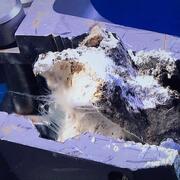
Professor Peter Girguis teamed with researchers at University of Minnesota to examine collected samples of carbonate rocks from the Del Mar East methane seep. The study published in The ISME Journal: Multidisciplinary Journal of Microbial Ecology discovered that deep-sea bacteria are dissolving the rocks, releasing excess carbon into the ocean and atmosphere.
“If CO2 is being released into the ocean, it’s also being released into the atmosphere, because they’re constantly interchanging gases between them,” explained Dalton Leprich, the first author on the paper and a Ph.D. student in the University of Minnesota’s Department of Earth and Environmental Sciences. “While it’s not as big of an impact as what humans are doing to the environment, it is a flux of CO2 into the atmosphere that we didn’t know about. These numbers should help us home in on that global carbon budget.”
The study findings will help scientists more accurately estimate the amount of carbon dioxide in Earth's atmosphere.
Image Credit: Leprich, et al., Bailey Geobiology Research Group, University of Minnesota.
